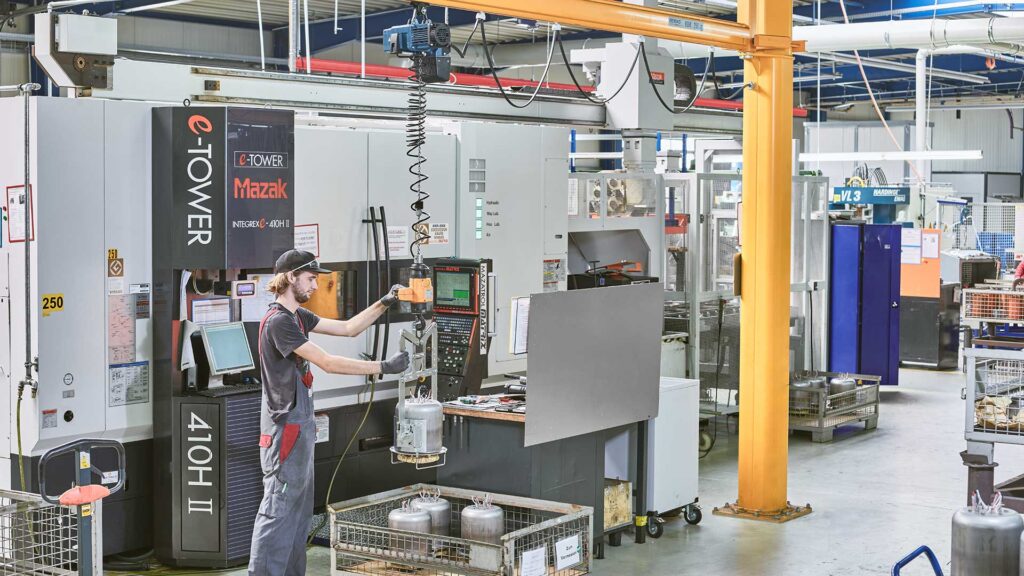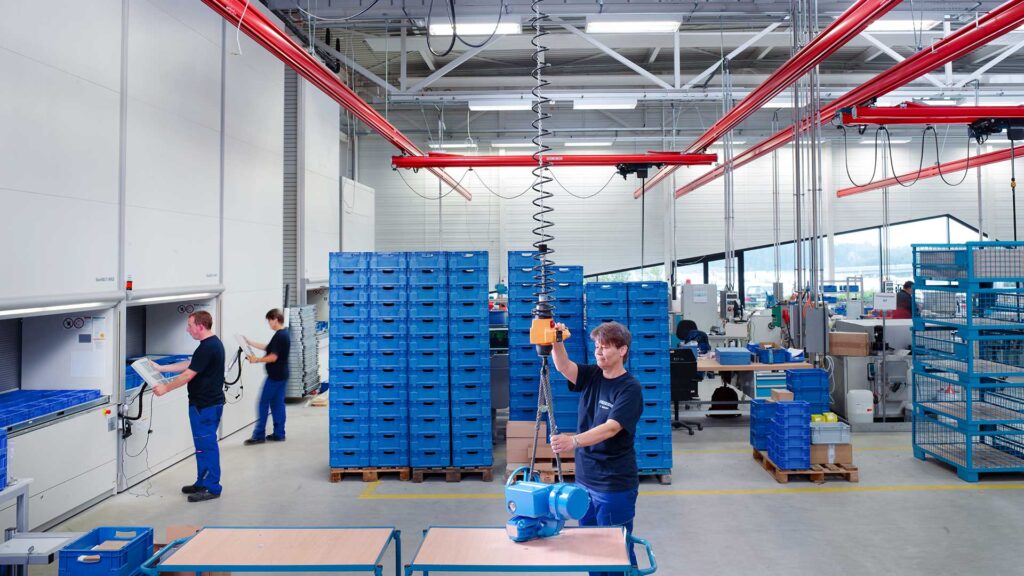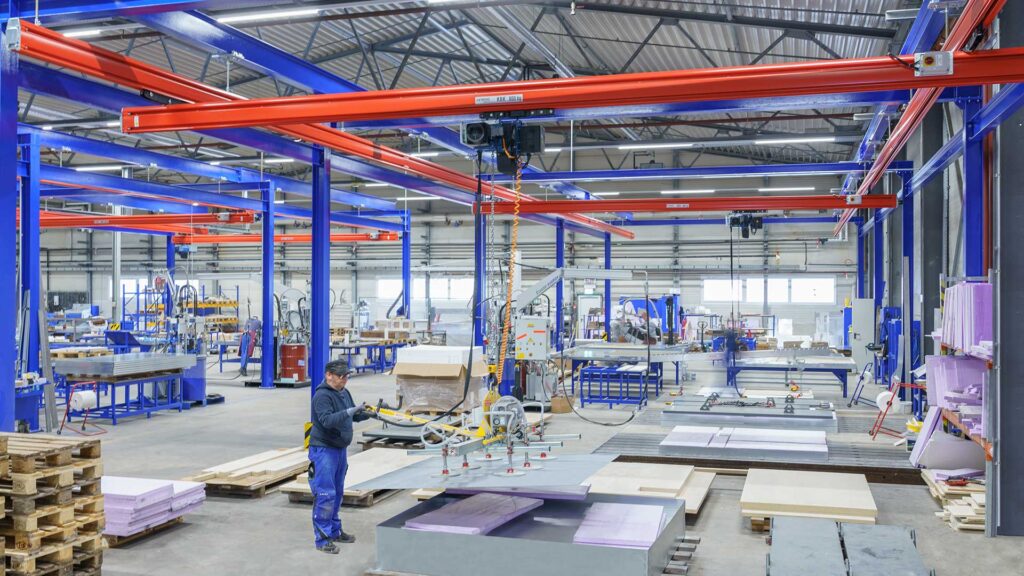Many distribution and fulfillment centers will use robots for fast pick and place operations where efficiency is key. Fast pick and place tasks can be found in manufacturing and processing environments as well. When combining fast pick and place activities with lifting, there are additional requirements to consider. Each of these applications has a different set of needs based on the unique requirements of the situation. This post will focus on fast pick and place activities that involve lifting in manufacturing and assembly environments.
Robotic Pick and Place Activities
Automation and robotics have brought new measures of efficiency into play. In many distribution and fulfillment centers, robots are used for tasks like picking, sorting, and placing components. This type of automation can eliminate or minimize wasted walk time, human error, time to find SKUs, and potential workplace injuries associated with an operator. Though robots can take on work traditionally completed by an operator, they may not eliminate the need for operators to complete a task.

Requirements of Pick and Place Activities with Operators
When robotics and automation may not be able to complete a given pick and place task, an operator must complete the job. This can be the case for handling fragile components, the appropriate fit for your process or requirements, budgetary restrictions, or other reasons. No matter the reason for needing an operator, you need to make sure to meet certain requirements, especially when that process involves lifting.
Ergonomics
Workplace safety is a critical aspect of your operations. OSHA reports on workplace injuries like MSDs in lifting operations. Assuring lifting is ergonomic is critical. Manual lifting should be performed properly per OSHA recommendations. Alternatively, adding a lifting device can improved the ergonomics of lifting compared to manual lifting.
Lift Assist Devices & Intelligent Lifting
Using chain hoists or balancers for lifting operations can make lifting more ergonomic. It is important to match the device to the task at hand. Both chain hoists and balancers, air or electric, can optimize ergonomics. These devices help lift a component to eliminate manual lifting. They can make maneuvering, lifting, and lowering move with the natural pace of the operator. The controls of the device should be ergonomic as well since they are the operator’s connection to the hoist.

Chain hoists, air balancers, and electric balancers can be considered intelligent lifting devices since the hoists can be programmed to meet unique requirements. These devices include programming for additional safety parameters. Intelligent devices allow you to tailor them to the requirements of the specific process and, potentially, your overall shop safety goals.
Using a Lifting Device in Fast Pick and Place Processes
Choosing a lifting device for fast pick and place operations should meet your process, efficiency, and safety requirements. The chain hoist or balancer should be matched to your operation and may require stepless variable speed. This means the firmer the operator pushes the button on the pendent, the faster the speed will go.

The clean air power of an air balancer, or pneumatic balancer, uses compressed air to create variable speed movement when the key control is pressed. Regardless of the device, it should allow the operator to pick up and place a component following the natural movements of the operator and at an appropriately faster or slower speed.

Depending on what you are placing a component, the chain hoist or balancer may need to allow for precise pick up and placement. Fragile components may have these requirements to minimize breakage of the parts. Handling odd-shaped components may require operators to move in a more complex way. A lifting device with the precision and speed requirements for the job can make handling components more efficient and safer.
Fast pick and place processes are found in many distribution and manufacturing environments, all with unique requirements. Robotics and automation have brought many benefits to fulfillment and distribution centers. When an operator is still necessary for this task in manufacturing or other environments, make sure you are making the task as safe as possible. Using intelligent lifting devices can bring benefits to your operations. As you continue to research a solution to meet your requirements, make sure to partner with a qualified lifting device manufacturer or material handling dealer.
